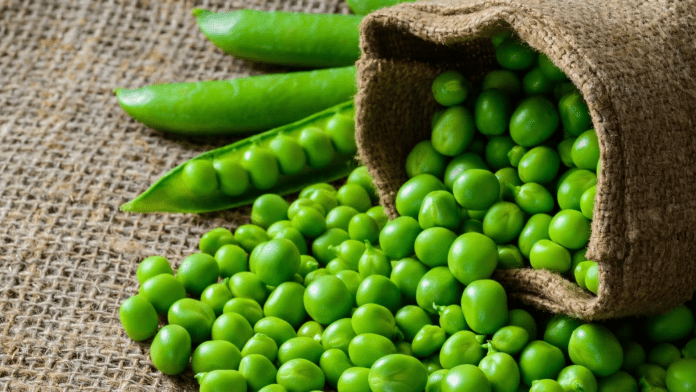In recent years, the prevalence of diabetes has surged to alarming levels worldwide, posing significant challenges for public health systems and individuals alike. Diet plays a crucial role in managing diabetes and mitigating its complications. However, not all foods that may seem healthy for the general population are equally suitable for those with diabetes. One such food that requires careful consideration is green peas, a popular vegetable known for its vibrant color and nutritional profile.
While green peas offer essential vitamins, minerals, and dietary fiber, their impact on blood sugar levels may be a concern for individuals with diabetes. This article aims to shed light on the potential pitfalls of consuming green peas in such cases and explores alternative dietary options for better blood sugar management.
Nutritional Composition of Green Peas:
Green peas (Pisum sativum) are a member of the legume family and are celebrated for their nutritional content. They are a good source of vitamins such as vitamin K, vitamin C, and B vitamins like folate and thiamine. Moreover, green peas contain essential minerals like iron, magnesium, and potassium, which are essential for overall health.
Additionally, green peas boast a considerable amount of dietary fiber, particularly soluble fiber. Soluble fiber has been shown to slow down the absorption of sugar, thereby potentially helping in managing blood glucose levels. However, it is essential to consider the carbohydrate content of green peas, as this is a crucial factor affecting blood sugar levels.
Glycemic Index of Green Peas:
The glycemic index (GI) is a numeric scale that ranks foods based on their ability to raise blood glucose levels compared to a reference food, usually glucose or white bread. Foods with a high GI (above 70) are rapidly digested and cause a significant spike in blood sugar, whereas foods with a low GI (below 55) are digested more slowly and lead to a gradual rise in blood sugar.
Green peas have a moderate to high GI, with values typically ranging from 32 to 54, depending on various factors such as ripeness, cooking method, and individual differences. This means that while green peas may not raise blood sugar levels as quickly as high-GI foods like white bread or sugary snacks, they can still lead to noticeable increases in glucose levels.
Impact on Insulin Response:
Insulin is a hormone produced by the pancreas that helps regulate blood sugar levels by facilitating the uptake of glucose into cells. For individuals with diabetes, maintaining appropriate insulin responses is crucial for managing their condition effectively.
When green peas are consumed, their carbohydrate content is broken down into glucose during the digestion process. This glucose enters the bloodstream, leading to a rise in blood sugar levels. The body responds by releasing insulin to transport the glucose into cells. However, the moderate to high GI of green peas can lead to a rapid increase in blood glucose levels, which might challenge the insulin response in individuals with diabetes, particularly those with insulin resistance or impaired insulin production.
Serving Size and Portion Control:
Portion control is a key aspect of managing diabetes, regardless of the type of food being consumed. Even though green peas offer several health benefits, overindulging in this vegetable can elevate blood sugar levels beyond desired targets.
The American Diabetes Association suggests that individuals with diabetes follow a mindful approach to portion control. It is advisable to limit the serving size of green peas to ensure a balanced carbohydrate intake. Incorporating green peas as part of a well-rounded meal that includes other non-starchy vegetables, lean proteins, and healthy fats can help mitigate the impact on blood sugar levels.
Alternative Food Choices:
If green peas pose a challenge to blood sugar management, it is important to explore alternative food options that can provide similar nutritional benefits without causing significant glycemic fluctuations. Some suitable alternatives for individuals with diabetes include:
- Non-starchy vegetables: Leafy greens, broccoli, cauliflower, asparagus, Brussels sprouts, and zucchini are excellent choices as they are low in carbohydrates and have minimal impact on blood sugar levels.
- Legumes with lower GI: Lentils, chickpeas, and black beans are legumes that have a lower GI compared to green peas. These alternatives offer similar nutritional profiles while exerting a more favorable influence on blood sugar control.
- Protein-rich foods: Incorporating lean proteins such as fish, poultry, tofu, and eggs into meals can help balance blood sugar levels and provide essential nutrients.
Final Thoughts:
While green peas offer numerous health benefits and are a popular vegetable choice, individuals with diabetes must exercise caution when incorporating them into their diet. Their moderate to high glycemic index and impact on insulin response make them potentially problematic for blood sugar management. However, by practicing portion control, considering alternative food options, and adhering to a well-rounded meal plan, individuals with diabetes can still enjoy a balanced and nutritious diet. As always, consulting with a healthcare professional or registered dietitian is essential for personalized dietary guidance tailored to individual needs and preferences.


